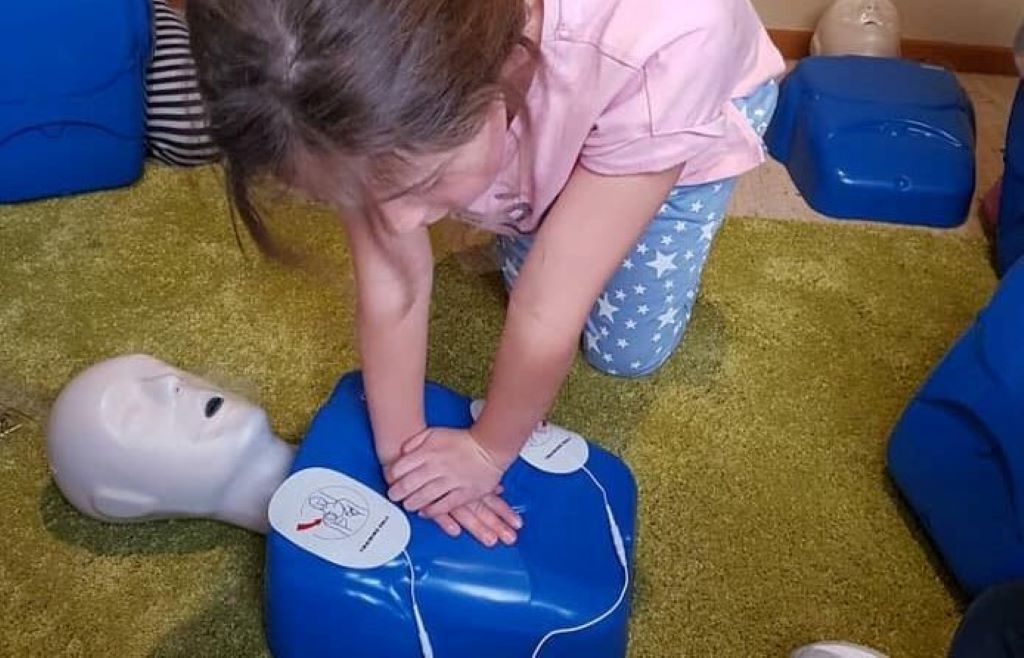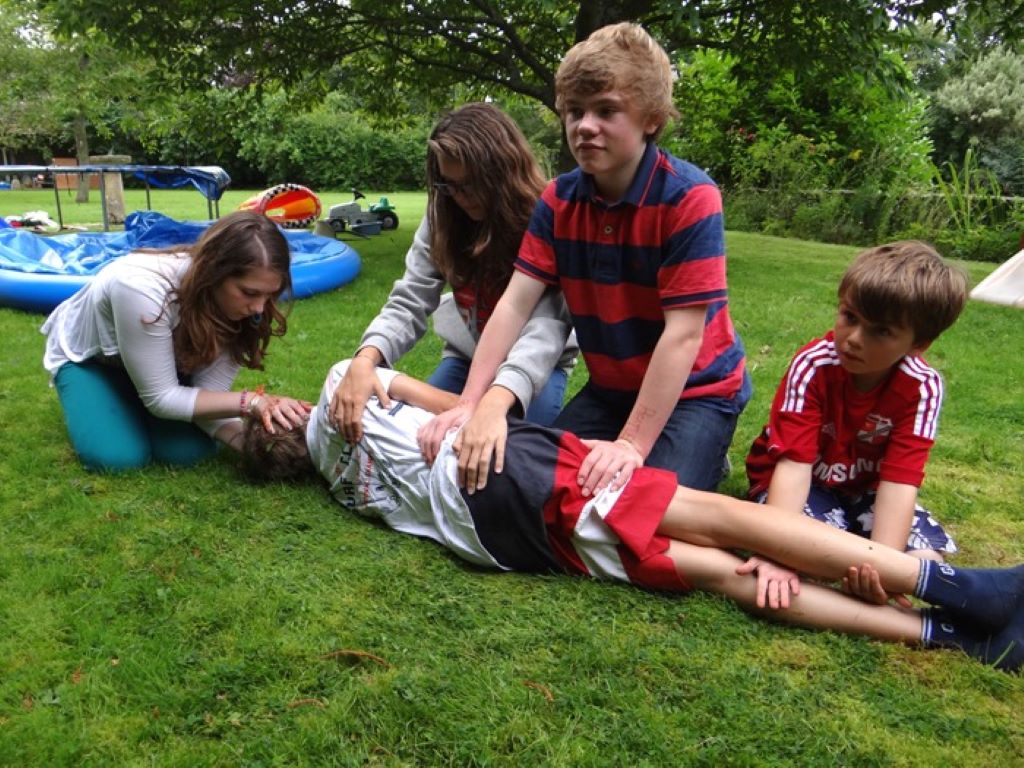Teaching children and teenagers essential first aid skills can save lives. World First Aid Day provides the perfect opportunity to engage young people in learning these vital techniques. According to Health Articles Magazine, organizing educational activities during this important day helps build confidence and prepares youth for emergency situations.
First aid education goes beyond basic bandaging. Therefore, creating engaging activities ensures children retain important safety information. Additionally, hands-on learning experiences make complex medical concepts more accessible to younger audiences.
Many parents and educators wonder when is World First Aid Day celebrated every year? This global awareness day takes place on the second Saturday of September annually. However, schools and community organizations often extend celebrations throughout the entire month to maximize participation.
Why First Aid Education Matters for Young People
Children face numerous situations where basic first aid knowledge proves invaluable. Furthermore, teaching these skills early creates responsible future adults who can respond effectively during emergencies. Studies show that young people who receive proper first aid training demonstrate increased confidence in crisis situations.
Emergency preparedness extends beyond individual benefits. Additionally, trained youth often become community advocates for safety awareness. Therefore, investing in first aid education creates a ripple effect that strengthens entire neighborhoods and schools.
Age-Appropriate First Aid Activities
Elementary School Activities (Ages 5-10)
Young children learn best through interactive games and simple demonstrations. Therefore, activities should focus on basic concepts rather than complex medical procedures.
Bandage Relay Race: Children practice applying bandages to stuffed animals or dolls. This activity teaches proper wound care while maintaining an element of fun. Additionally, teams can compete to see who applies bandages most effectively.
Emergency Contact Memory Game: Students memorize important phone numbers through songs and rhymes. However, make sure to emphasize when to call different emergency services. Furthermore, practice sessions help reinforce these crucial numbers.
Stop, Drop, and Roll Theater: Children act out fire safety scenarios in dramatic presentations. Therefore, they learn essential burn prevention techniques through creative expression. Additionally, costumes and props make the experience more memorable.
Middle School Activities (Ages 11-14)
Pre-teens can handle more detailed first aid concepts while still enjoying interactive learning experiences. Therefore, activities should balance education with engagement to maintain interest levels.
CPR Training with Mannequins: Students learn chest compressions and rescue breathing techniques. However, ensure proper supervision and age-appropriate instruction. Additionally, certification programs designed for young people provide structured learning paths.
Choking Response Demonstrations: Participants practice the Heimlich maneuver on training dummies. Furthermore, understanding airway obstruction signs helps students recognize emergency situations quickly. Therefore, repeated practice builds muscle memory for these critical skills.
First Aid Kit Creation: Teams assemble comprehensive emergency kits while learning about each item’s purpose. Additionally, students research different scenarios where specific supplies prove essential. However, emphasize the importance of adult supervision during actual emergencies.
High School Activities (Ages 15-18)
Teenagers can participate in advanced first aid training that prepares them for real-world situations. Therefore, activities should reflect the complexity of skills they can reasonably master.
Mock Emergency Scenarios: Students respond to realistic accident simulations with proper first aid techniques. Additionally, debriefing sessions help identify areas for improvement. However, ensure scenarios remain age-appropriate and avoid overly graphic content.
Mental Health First Aid Workshops: Participants learn to recognize signs of emotional distress in peers. Furthermore, these sessions provide tools for supporting friends during difficult times. Therefore, comprehensive first aid education includes psychological well-being alongside physical health.
Community Service Projects: Students teach younger children basic first aid skills through mentoring programs. Additionally, this approach reinforces their own knowledge while serving their communities. However, proper adult supervision ensures safety during all activities.
Creative Learning Approaches
Technology Integration
Modern students respond well to digital learning tools and interactive technology. Therefore, incorporating apps and online resources enhances traditional first aid education methods.
Virtual Reality Training: Students experience emergency scenarios through immersive technology without actual danger. Additionally, VR programs allow repeated practice of high-stress situations. However, balance digital learning with hands-on skill development.
First Aid Apps and Games: Educational applications gamify learning experiences while teaching essential concepts. Furthermore, mobile technology allows students to access information anywhere. Therefore, recommend age-appropriate apps that align with curriculum goals.
Arts and Crafts Activities
Creative expression helps students process and remember first aid information more effectively. Additionally, artistic projects provide alternative learning styles for diverse student populations.
Safety Poster Campaigns: Students design informational posters highlighting different first aid techniques. Furthermore, displaying finished artwork reinforces lessons for the entire school community. Therefore, visual reminders serve ongoing educational purposes.
First Aid Comic Books: Participants create illustrated stories featuring characters who use proper emergency response techniques. Additionally, storytelling makes complex concepts more relatable and memorable. However, ensure accuracy in all medical information presented.

Community Involvement and Partnerships
Local Emergency Services Collaboration
Partnering with professional first responders adds authenticity and expertise to educational programs. Therefore, inviting paramedics, firefighters, and nurses enhances learning experiences significantly.
Fire departments often provide educational presentations and equipment demonstrations. Additionally, police officers can discuss emergency response procedures and safety awareness. However, coordinate schedules well in advance as these professionals have demanding responsibilities.
According to the American Red Cross, community partnerships strengthen first aid education programs while building valuable relationships between youth and emergency services personnel.
Healthcare Professional Guest Speakers
Medical professionals bring real-world experience and credibility to first aid education programs. Furthermore, hearing from doctors, nurses, and emergency medical technicians inspires some students to consider healthcare careers.
Guest speakers can share stories about how first aid training made differences in actual emergency situations. Additionally, professionals can demonstrate advanced techniques while emphasizing the importance of basic skills. Therefore, these presentations motivate students to take first aid education seriously.
Safety Considerations and Best Practices
Supervision Requirements
All first aid activities require appropriate adult supervision to ensure student safety. Therefore, maintain recommended adult-to-student ratios based on age groups and activity complexity.
Instructors should possess current first aid certifications and experience working with young people. Additionally, backup supervision ensures continuous safety oversight during all activities. However, avoid overwhelming students with too many adults present.
Equipment and Supply Management
Proper equipment maintenance and storage protects both students and materials. Furthermore, regular inventory checks ensure all supplies remain current and functional.
Training mannequins require regular cleaning and sanitization between uses. Additionally, expired supplies should be replaced promptly to maintain educational accuracy. Therefore, establish clear protocols for equipment management and replacement schedules.
Measuring Success and Continued Learning
Assessment Methods
Evaluating student progress helps identify successful teaching methods and areas needing improvement. Therefore, use multiple assessment approaches to accommodate different learning styles.
Practical demonstrations allow students to showcase hands-on skills in controlled environments. Additionally, written assessments test knowledge retention and understanding of key concepts. However, avoid creating high-stress testing situations that might discourage participation.
Follow-Up Activities
First aid education should continue beyond single-day events to ensure long-term retention. Furthermore, regular practice sessions help maintain and improve essential skills over time.
Monthly review sessions reinforce previously learned techniques while introducing new concepts gradually. Additionally, seasonal safety topics provide relevant contexts for applying first aid knowledge. Therefore, create year-round programs rather than limiting education to specific dates.
Conclusion
World First Aid Day activities provide excellent opportunities to teach children and teenagers life-saving skills through engaging, age-appropriate methods. From simple bandaging games for elementary students to advanced CPR training for high schoolers, these educational experiences build confidence and prepare young people for emergency situations.
Therefore, schools, community organizations, and families should prioritize first aid education as an essential life skill. Additionally, partnerships with local emergency services and healthcare professionals enhance learning experiences while building valuable community connections. However, always maintain proper supervision and safety protocols during all activities.
Furthermore, successful first aid education extends beyond single events to create ongoing learning opportunities throughout the year. By investing in comprehensive first aid training for youth, communities develop stronger emergency response capabilities and more prepared future adults.
Frequently Asked Questions
- What age is appropriate to start teaching first aid to children?
Children as young as 5 years old can learn basic first aid concepts through age-appropriate activities. However, complex skills like CPR are better suited for students aged 11 and older who have the physical strength and coordination required.
- Do students need formal certification for first aid training?
While formal certification isn’t required for educational activities, many organizations offer youth-specific certification programs. Therefore, older teenagers might benefit from pursuing official credentials that could help with college applications or job opportunities.
- How can parents reinforce first aid learning at home?
Parents can practice emergency scenarios, review important phone numbers, and maintain well-stocked first aid kits at home. Additionally, discussing safety awareness during daily activities helps reinforce classroom learning naturally.
- What equipment is needed for basic first aid education?
Essential supplies include bandages, training mannequins for CPR practice, basic first aid kits, and age-appropriate educational materials. However, many activities can be adapted using household items or borrowed equipment from local organizations.
- How often should first aid skills be reviewed and practiced?
First aid skills should be reviewed and practiced regularly throughout the year, not just during World First Aid Day. Therefore, monthly or quarterly review sessions help maintain proficiency and introduce new concepts gradually as students mature.
Read More:
Allergic rhinitis: Natural remedies and prevention










